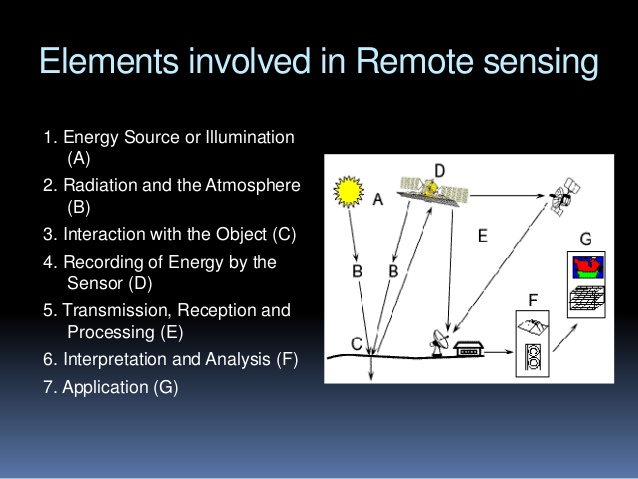General Science Notes On – Elements Of Remote Sensing – For W.B.C.S. Examination.
সাধারণ বিজ্ঞান নোট – রিমোট সেন্সিং এর উপাদান – WBCS পরীক্ষা।
The sensor mechanisms are very variable, and each has a distinct set of characteristics, but the main points are:Continue Reading General Science Notes On – Elements Of Remote Sensing – For W.B.C.S. Examination.
- a)The sensor can be an active system (where the satellite or the aircraft provides the source of illumination, this technique is used when no suitable natural source of radiation exists), or be a passive system (the source of the object illumination is independent of the sensor and it is a natural source).
- b)A variety of different parts of the electromagnetic spectrum can be used including:
Blue, green, and red are the primary colors or wavelengths of the visible spectrum. They are defined as such because no single primary color can be created from the other two, but all other colors can be formed by combining blue, green, and red in various proportions.
- Thermal sensors: Remote sensing in the thermal-infrared wavelengths usually falls into the passive category, but in this case, the source of the radiation is the object itself. There is no irradiance and the sensor detects radiation which has been emitted by the object.
- Microwaves (radar): These are used in the active remote sensing systems. The satellite or aircraft carries an antenna which emits a microwave signal. This signal is reflected by the ground and the return signal is detected again by the antenna.
Each part of the spectrum has different characteristics and gives rather different information about earth’s surface. In addition, different surface covers (vegetation, water, soil, etc) absorb and reflect differently in different parts of the spectrum. Different wavebands in the electromagnetic spectrum therefore tend to be useful for different purposes.
- c)The sensor may be sensitive to a single portion of the electromagnetic spectrum (e.g. the visible part of the spectrum, like panchromatic film which is sensitive to the same wavebands as our eyes). Alternatively, it may be able to detect several parts of the spectrum simultaneously. This latter process is called multispectral sensing.
- d)Sensor equipment takes many shapes and forms, such as cameras, scanners, radar.Radiation target interactionRadiation that is not absorbed or scattered in the atmosphere can reach and interact with the Earth’s surface. There are three forms of interaction that can take place when energy strikes, or is incident upon the surface. These are absorption, transmission, and reflection. The total incident energy will interact with the surface in one or more of these three ways. The proportions of each will depend on the wavelength of the energy and the material and condition of the feature.Absorption occurs when radiation is absorbed into the target, while transmission occurs when radiation passes through a target. Reflection occurs when radiation “bounces” off the target and is redirected. In remote sensing, we are most interested in measuring the radiation reflected from targets.Let’s take a look at a couple of examples of targets at the Earth’s surface and how energy at the visible and infrared wavelengths interacts with them.Vegetation:
Chlorophyll strongly absorbs radiation in the red and blue wavelengths but reflects green wavelengths. Leaves appear “greenest” to us in the summer, when chlorophyll content is at its maximum. In autumn, there is less chlorophyll in the leaves, so there is less absorption and proportionately more reflection of the red wavelengths, making the leaves appear red or yellow (yellow is a combination of red and green wavelengths). The internal structure of healthy leaves act as excellent diffuse reflectors of near-infrared wavelengths. If our eyes were sensitive to near-infrared, trees would appear extremely bright to us at these wavelengths. In fact, measuring and monitoring the near-IR (NIR) reflectance is one way that scientists can determine how healthy (or unhealthy) vegetation may be. Vegetation could be differentiated using NIR sensors, e.g. deciduous trees have a higher reflectance than the coniferous in NIR.
Please subscribe here to get all future updates on this post/page/category/website


 +919674493673
+919674493673  mailus@wbcsmadeeasy.in
mailus@wbcsmadeeasy.in







































































































